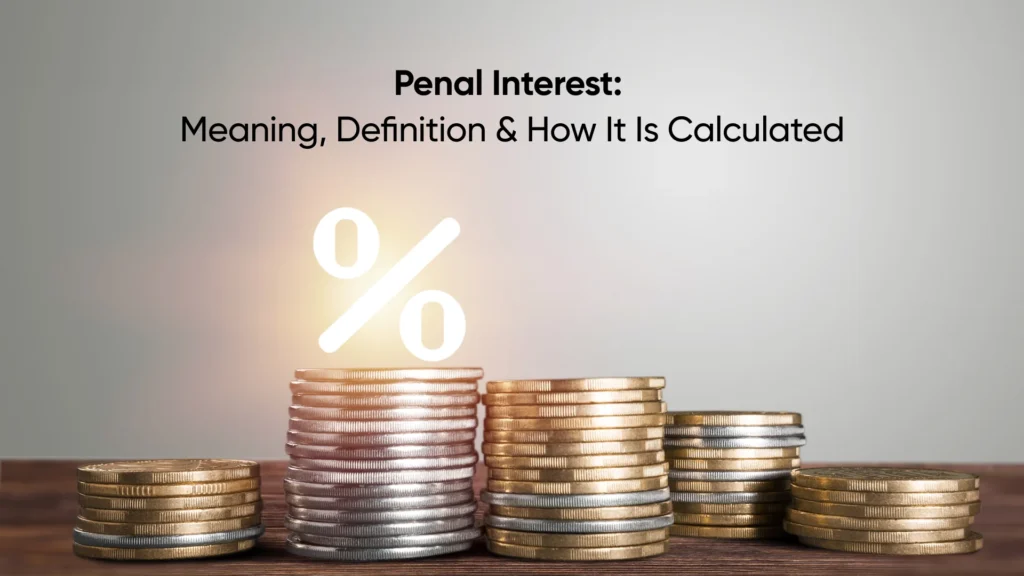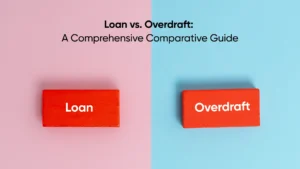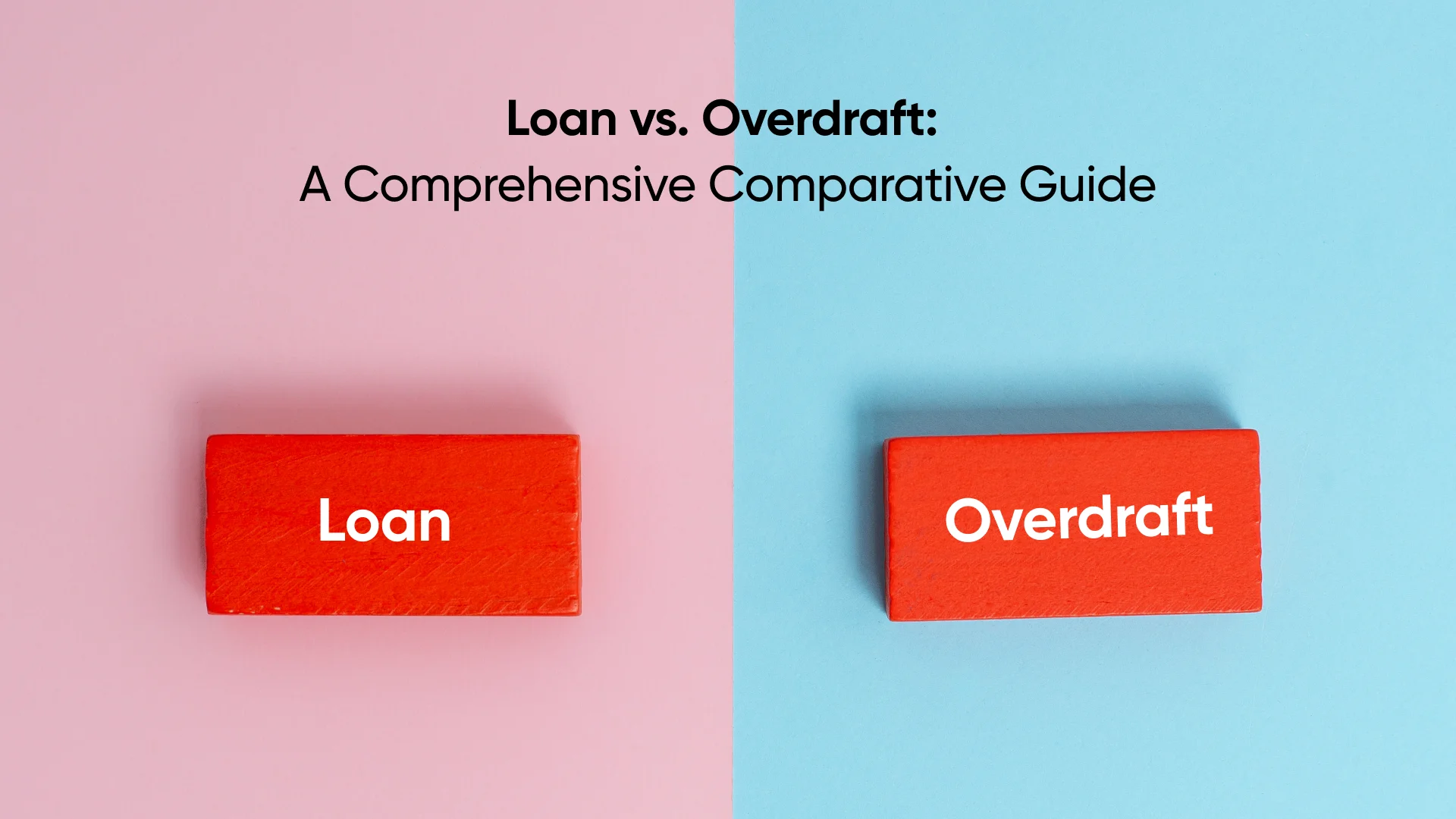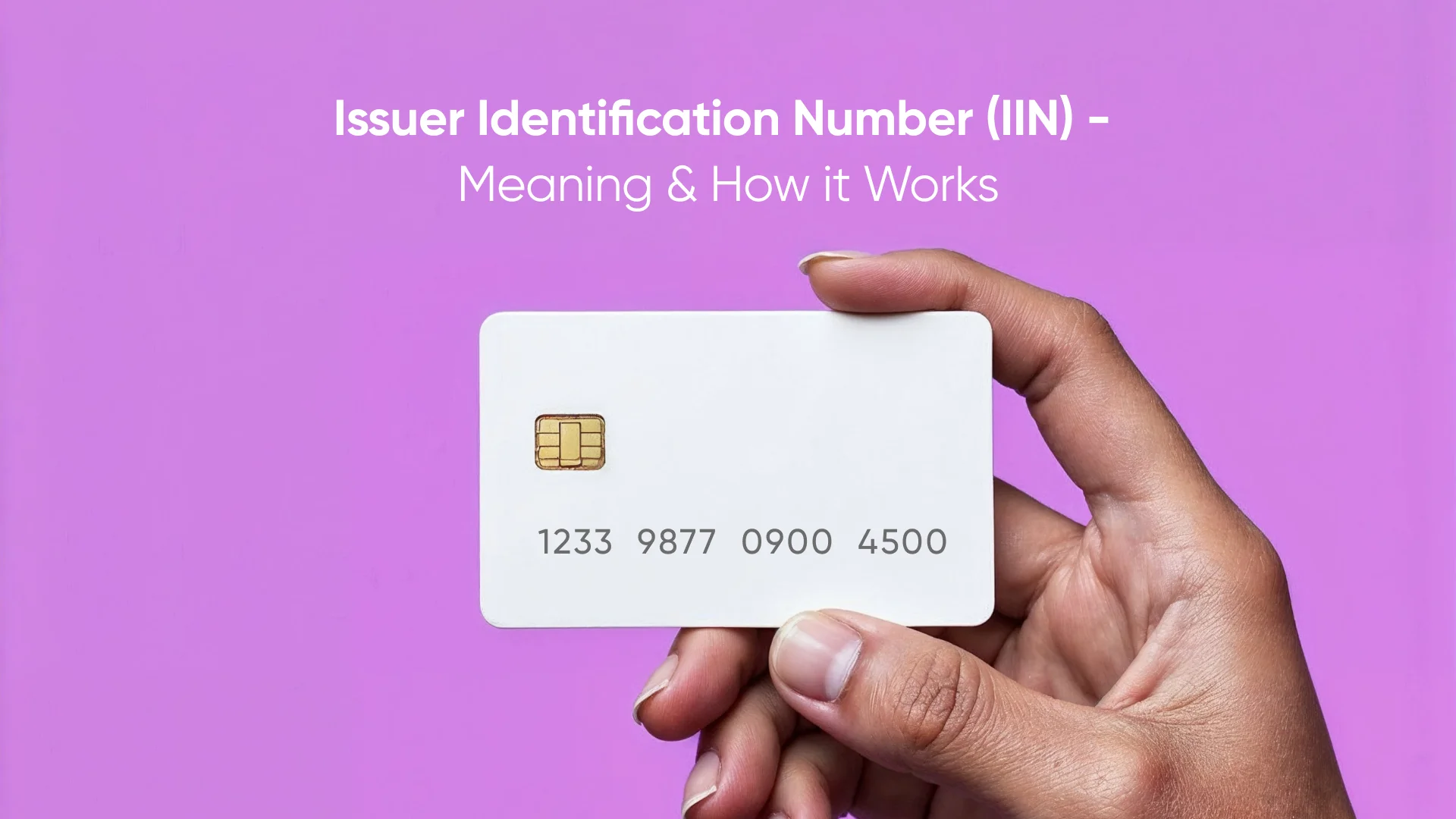Penal Interest: Meaning, Definition & How It Is Calculated

Before taking a loan, it is crucial to have a solid repayment strategy in place. Borrowing money comes with the responsibility of making timely payments, and missing a due date can lead to penal interest. What is penal interest? It is an extra charge on top of your regular interest. This not only increases the overall cost of your loan but can also hurt your credit score, impacting future borrowing.
So, how is penal interest calculated, and what can you do to avoid it? In this guide, we’ll break it down into simple terms to help you manage your loans wisely and avoid any penalties.
Table of Contents
ToggleWhat is Penal Interest?
Penal interest is the charge levied on the outstanding loan amount or credit card bill amount when the borrower does not make the payment on time. The penalty is charged to ensure the borrower makes timely payments. The penal interest is charged as per the loan agreement. For instance, if the interest rate on the loan amount is 22% p.a, then the lender may levy a 2% penal interest. Thus, if you miss or delay any payments, the penal interest will be 24% on the overdue amount.
Why Do Lenders Charge Penal Interest?
To Encourage Timely Payments: The lender levies a high interest on late payment to deter borrowers from any future late or missed payments.
Operational Costs: Late payments increase more work for the lender. Operational costs like added administrative effort and in some cases legal actions incur costs. The penal interest helps the lender cover these additional costs.
Compensation for Risk: When a payment is late, the lender faces increased risk and potential disruption in their financial planning. The extra charge compensates for this risk and any additional administrative efforts required to manage the overdue payment.
Ensures Financial Discipline: From an economic perspective, penal interest helps maintain financial discipline among borrowers, which aids in the overall health of the financial system.
How is Penal Interest Calculated?
Penal interest is generally calculated on the overdue amount for the period of delay.
Here’s a step-by-step breakdown:
Determine the Overdue Amount: Identify the principal or EMI amount that remains unpaid.
Identify the Penal Interest Rate: This rate is usually expressed as an additional percentage (monthly, daily, or annually) on top of the normal interest rate.
Calculate the Interest for the Overdue Period:
Monthly Calculation:
If the rate is given on a monthly basis, the formula is:
Penal Interest = [Overdue Amount] * [Penal Rate (%) / 100] * [Number of Months Overdue]
Daily Calculation:
If the rate is on a daily basis, use:
Penal Interest = [Overdue Amount] * [(Penal Rate (%)) / (100* 365)] * [Number of Days Overdue]
Examples of Penal Interest Calculation
Consider you have an overdue of 20,000 on a 3-month delay with a 2% penal interest per month.
Overdue Amount: ₹20,000
Penal Interest Rate: 2% per month
Delay: 3 months
Calculation:
1. Monthly Penal Interest:
[ Monthly Interest] = ₹20,000 * (2/100) = ₹20,000 * 0.02 = ₹400
2. Total Penal Interest for 3 Months:
[Total Penal Interest] = ₹400 * 3 = ₹1,200
Result: If you delay your payment by 3 months, you’ll incur an additional penal interest of ₹1,200 on the overdue amount.
Note: Review your loan agreement as methods and rates can vary between lenders.
Difference Between Regular Interest & Penal Interest
Factor | Regular Interest | Penal Interest |
Definition | The interest charged on a loan or credit bill as per the agreed terms. | The additional interest charged on a loan or credit bill when a borrower fails to make timely payments. |
Purpose | Interest rate is charged by the lender as compensation for lending money and covering risks. | Penal interest is charged for late payment or non-compliance with loan terms. It incentivizes the borrower to repay on time. |
Applicability | Applied from the start of the loan as per the agreed rate. | Applied only when there is a default or delay in payment. |
Rate of Interest | Usually lower than penal interest (e.g., 18% per annum). | Higher than regular interest, often 2-3% above the interest rate. |
Calculation | Regular interest is calculated based on the principal amount and tenure. | Penal interest is calculated on overdue amounts and penal interest rate. |
Impact on Borrower | Expected cost of borrowing. | Additional financial burden due to non-compliance. |
Thus, regular interest is the agreed-upon charge for borrowing money, while penal interest is an added charge imposed as a penalty for late payments or defaults.
Ways to Avoid Penal Interest
Penal interest is an extra charge levied by banks and financial institutions when you delay or default on your loan or credit payments. Here are some effective ways to avoid penal interest:
Automate Payments: Set up automatic bill and EMI payments to never miss any payments. This saves you the hassle to remember to make payments
Keep Track of Due Dates: Stay on top of due dates for any loan, credit bills you need to pay. Check for any updates in the payment cycle.
Maintain Sufficient Balance: Ensure that your bank account has enough funds to pay the repayment amount before EMI or bill payments. Avoid cheque bounces as they may attract additional penalties.
Prepay When Possible: If you have surplus funds, consider prepaying part of your loan to reduce the outstanding amount.
Negotiate With Lenders: Ask for an extension if you have a valid reason for late payments and try to negotiate to waive the penalty charges.
Opt for Loan Consolidation: If you have multiple loans with high penalties, consolidating them into a single loan to pay them off in a better way
Impact of Penal Interest on Credit Score & Finances
Impact on Credit Score: If you default on EMI payments or credit bills or make late payments, it impacts your credit score as a borrower. A low credit score makes it difficult to secure loans or credit in the future.
Impact on Finances: Paying penal interest increases the overall cost of your loan, making it more expensive. It also negatively impacts your credit score, potentially making it harder to secure loans in the future. Even if you qualify for a loan later, lenders may impose stricter terms, such as higher interest rates or shorter repayment tenures.
Conclusion
Penal interest is an extra charge that you pay when you miss loan payments or default on your dues. It is essentially the lender’s way of discouraging late payments by adding a financial penalty on top of your regular interest. The exact rate varies depending on the lender, but it’s usually higher than the agreed-upon interest rate.
Paying penal interest not only makes your loan more expensive but also affects your credit score, which can make it harder to get loans in the future. The best way to avoid penal interest is to stay on top of your payments, set reminders, automate payments and check your loan terms carefully before taking any loan or credit.
Frequently Asked Questions
What Is Meant By Penal Interest?
Penal interest is charged on a loan or credit bill when a borrower doesn’t make the payment on time.
What Is 2 Percent Penal Interest?
A 2 percent penal interest is the percentage added to the existing interest rate. For instance, if the normal interest rate is 12%, then the 2% penal interest makes the total interest 14%.
Why Is Penal Interest Charged?
Penal interest is charged when the borrower fails to make loan repayments on time.
How Is Penal Interest Different From Regular Interest?
Penal interest is an extra charge added when a loan payment is late or missed, while regular interest is the standard rate charged for borrowing money.
How Do Lenders Calculate Penal Interest On Late Payments?
Lenders calculate penal interest on late payments using the formula: Penal Interest = (Outstanding Amount x Penal Interest Rate / 365) x Number of Days Late.
Can Penal Interest Be Waived Or Reduced?
Yes, penal interest can sometimes be waived or reduced. It depends on the lender’s policies and the circumstances. You may negotiate with the lender, explaining the reason for the late payment, or providing evidence of financial hardship.
What Are The Consequences Of Not Paying Penal Interest?
The consequences of not paying penal interest lead to a decline in credit score and in extreme cases can lead to legal action by the lender.
How Can Borrowers Avoid Incurring Penal Interest?
To avoid incurring penal interest, borrowers should make timely payments on their loans on or before the due date. Additionally, you can set up automatic payments to not miss any repayment.
Is Penal Interest Legal In India?
No, penal interest is not legal in India. As per recent Reserve Bank of India (RBI) regulations, lenders can only charge “penal charges” for late payments or non-compliance.
Does Penal Interest Affect My Credit Score?
Yes, penal interest negatively affects your credit score, and missing EMI payments regularly can potentially damage your credit history.
YOU MAY ALSO LIKE






Search by posts
Categories
- Blog (5)
- Credit History (36)
- Credit Line (7)
- Festive (4)
- Finance (15)
- Mutual Fund (18)
- Personal Loan (266)
- Tax (8)
- Zype (4)








